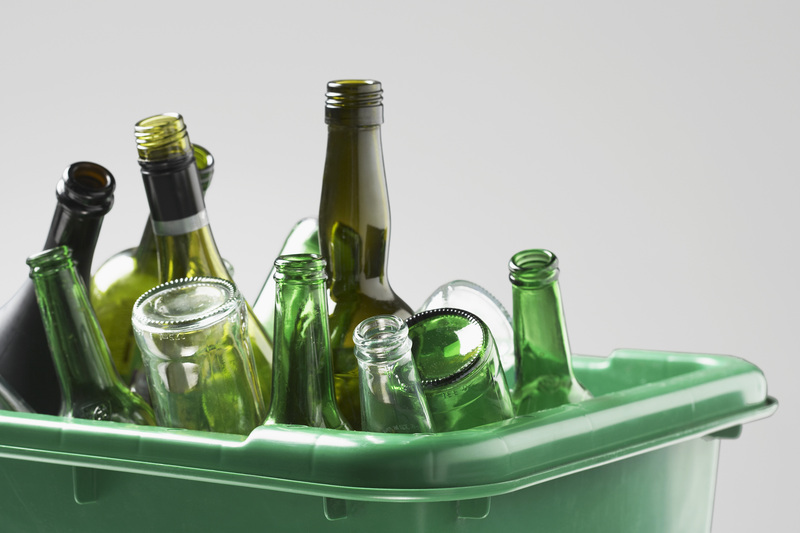Microplastic Pollution: Roadmap to a Cleaner Planet
Microplastic pollution has emerged as a critical environmental issue threatening ecosystems, wildlife, and human health worldwide. As users of plastics in everyday life, it is vital to understand the scale, sources, and solutions surrounding these tiny yet persistent pollutants. This comprehensive guide explores microplastic pollution, its widespread consequences, and a clear path forward--our roadmap to a cleaner planet.
What Are Microplastics? Understanding the Scope of Pollution
Microplastics are plastic fragments less than 5 millimeters in diameter. They originate either as primary microplastics (intentionally produced at a microscopic scale, such as microbeads found in cosmetics) or as secondary microplastics (broken down from larger plastic debris). Regardless of their source, they have become omnipresent in marine, freshwater, and terrestrial environments.
The Pervasive Sources of Microplastic Contamination
- Personal Care Products: Microbeads in face washes, scrubs, and toothpaste often escape traditional water treatment facilities.
- Textile Fibers: Synthetic fabrics like polyester shed microfibers during each wash, contributing significantly to microplastic pollution in water systems.
- Urban Runoff: Tire wear, paint fragments, and plastic litter from urban spaces wash into waterways, fragmenting into microplastics.
- Industrial Processes: Plastic pellets (nurdles), used as raw materials in manufacturing, are a major source of primary microplastics if spilled.
- Improper Waste Management: Plastics in landfills and improperly discarded waste degrade into secondary microplastics over time.

Why Is Microplastic Pollution a Growing Concern?
Microplastic pollution poses multifaceted risks. Because of their diminutive size and persistent nature, these particles are extremely difficult to remove from natural environments. Their impact goes beyond mere environmental nuisance, extending to wildlife health, the food chain, and even potential consequences for human beings.
Environmental Impact of Microplastics
- Marine Ecosystems: Microplastics accumulate in the oceans, affecting everything from plankton to large fish and marine mammals. They may impede photosynthesis in phytoplankton and enter the food web, harming marine biodiversity.
- Soil and Terrestrial Life: Recent studies reveal that microplastics also invade soils, impacting earthworms, crop growth, and terrestrial food webs.
- Atmospheric Spread: Microplastics are now found in the air we breathe, transported by wind and weather patterns across continents.
Threats to Human Health and Food Safety
- Seafood Contamination: As microplastics work their way up food chains, fish and shellfish consumed by humans may contain these particles, risking ingestion of harmful chemicals.
- Drinking Water and Air: Microplastics have been detected in both bottled and tap water, as well as atmospheric fallout, suggesting unavoidable human exposure.
- Potential Toxins: Many plastics contain additives or can absorb pollutants like PCBs and heavy metals, transporting these toxins into organisms that ingest them--including humans.
Global Scale of Microplastic Pollution: Alarming Facts and Figures
The ubiquity and persistence of microplastics in our environment is underscored by startling statistics and recent research:
- Over 51 trillion microplastic particles are currently floating in the world's seas--an alarming figure weighing over 250,000 tons.
- Microplastics have been found in every corner of the globe, from the deepest ocean trenches to the Arctic snow.
- On average, humans may ingest up to 5 grams of plastic per week, equivalent to a credit card mainly due to contaminated water, seafood, and air.
The Roadmap: Steps Toward Combating Microplastic Pollution
Addressing the microplastic crisis requires a multi-pronged approach involving policymakers, industries, and consumers. Below we present a systematic roadmap designed to mitigate microplastic pollution and pave the way to a cleaner planet.
1. Regulations and Policy Measures
- Banning Microbeads: Several countries have enacted laws to prohibit microplastics in personal care products. Expanding these bans across more nations is essential.
- Standardized Testing and Monitoring: Governments and environmental agencies must establish uniform methods for detecting and quantifying microplastics across various environments.
- Extended Producer Responsibility (EPR): Policies that hold manufacturers accountable for plastic waste encourage design innovation and closed-loop recycling systems.
2. Technological Innovations
- Improved Filtration in Washing Machines: Developing and mandating filters that capture microfibers from synthetic fabrics before water exits to sewage systems.
- Advanced Wastewater Treatment: Upgrading facilities to better capture microplastics before they reach the environment.
- Innovative Cleanup Solutions: New technologies, such as magnetic extraction and floating booms, are being trialed to collect microplastic particles from water bodies.
3. Sustainable Alternatives and Eco-Friendly Materials
- Developing Biodegradable Plastics: Investing in materials that break down naturally under environmental conditions, reducing long-term microplastic formation.
- Natural Fibers Over Synthetics: Promoting the use of cotton, hemp, bamboo, and other natural fibers over plastic-based textiles to reduce microfiber shedding.
- Eco-Conscious Product Design: Redesigning products to minimize plastic use and facilitate end-of-life recycling.
4. Consumer Action and Behavioral Change
Every individual plays a crucial role in reducing microplastic pollution. Here are effective actions you can take:
- Reduce, Reuse, Recycle: Minimize single-use plastics, opt for reusable products, and recycle correctly.
- Choose Microplastic-Free Products: Look for personal care items labeled "microbead-free" or certified by environmental organizations.
- Wash Clothes Wisely: Use washing bags that trap microfibers or install machine filters. Wash less and at lower temperatures to reduce fiber loss.
- Advocate for Change: Support organizations and policies working towards plastic-free communities. Raise awareness among friends, family, and local businesses.
- Litter Reduction: Always dispose of trash responsibly and participate in local cleanup events.
5. Enhancing Public Awareness and Education
- School Programs: Integrate microplastic education into curricula to empower future generations with knowledge and eco-friendly habits.
- Community Engagement: Host workshops, exhibitions, and interactive campaigns to involve citizens directly in plastic reduction efforts.
- Accessible Research: Support citizen science projects and make microplastic pollution data available to the public for transparency.
Success Stories: Microplastics Reduction in Action
Positive initiatives around the globe prove that curbing microplastic pollution is achievable with concerted effort and innovative thinking. Here are a few remarkable examples:
- Microbead Ban Implementation: The United States, United Kingdom, Canada, and several other countries have successfully banned microbeads in rinse-off cosmetics, significantly reducing microplastic load in waterways.
- Ocean Cleanup Projects: Organizations like The Ocean Cleanup are deploying advanced systems to collect floating plastics and microplastics from the world's oceans and rivers.
- Washing Machine Filters: Some European countries now require washing machine manufacturers to incorporate microfiber filters, drastically reducing textile-derived microplastics.
- Community-Driven Action: Coastal communities and NGOs globally conduct regular beach cleanups, removing tonnes of plastic debris before it fragments into microplastics.
Challenges and Limitations to Overcome
Despite growing awareness and action, significant challenges remain in the fight against microplastic pollution:
- Detection Difficulties: Microplastics are hard to monitor due to their size and varied chemical composition, requiring sophisticated methods and technologies.
- Fragmentation Continues: Even as we clean up larger plastics, the existing microplastics persist, breaking down into ever-smaller particles, including nanoplastics (less than 1 micrometer), with unknown impacts.
- Limited Global Policy: Many developing countries lack legislation or infrastructure for microplastic reduction, causing cross-border pollution issues in shared ecosystems.
- Unknown Health Impacts: Ongoing research is investigating how ingested microplastics affect long-term human health.

Looking Ahead: Innovations and Research to Watch
A combination of science, policy, and public participation is critical as we address the unknowns and seek lasting solutions. Some promising research and innovations include:
- Microplastic-Detecting Sensors: Portable sensors and AI-powered monitoring are on the horizon for real-time tracking of microplastic pollution in water and air.
- Bioremediation: Scientists are exploring bacteria, fungi, and even worms that can break down plastics at a molecular level, reducing microplastic threats.
- Material Science: Next-generation biodegradable and compostable plastics that function like conventional plastics but do not persist in nature.
- Ecosystem Restoration: Projects aiming to restore contaminated habitats and reintroduce native species, promoting natural resilience against pollution.
Conclusion: A Shared Responsibility for a Microplastic-Free Future
Tackling microplastic pollution requires global collaboration and personal accountability. By implementing smart policy, supporting innovative science, choosing sustainable options, and fostering environmental awareness, we can achieve a cleaner, healthier planet.
In sum, the roadmap to a microplastic-free world involves every sector of society. Let us all do our part--from everyday choices to supporting systemic change--to secure a future free from the invisible yet immense threat of microplastics.
Further Reading and Resources
- United Nations Environment Programme: Pollution, Plastics and Human Health
- World Health Organization: Microplastics in Drinking Water
- The Ocean Cleanup Project
Together, our actions today will define the planet we leave for generations to come. Join the movement for a microplastic-free future--the roadmap begins with us.